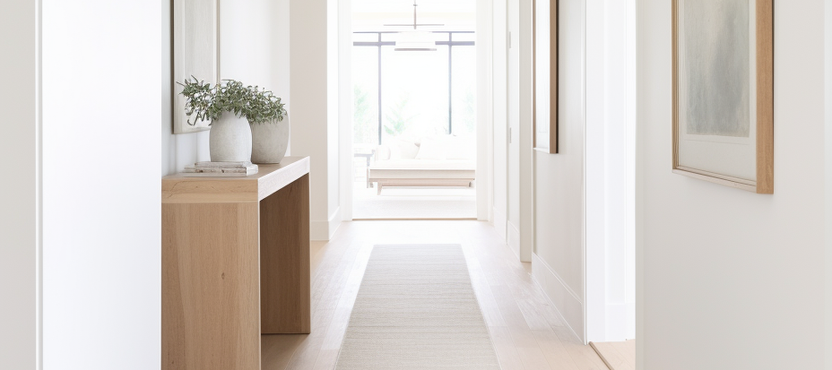Compact Space Styling: 8 Tips to Make Small Bathrooms Feel Luxe
- Beril Yilmaz

- Oct 21
- 5 min read
Small bathrooms can be some of the hardest spaces to design well. Limited square footage means every inch must serve a purpose, yet the room still needs to feel open and comfortable. With the right small bathroom design, a compact space can look high-end without requiring major renovations.
In most homes across the United States, the average full bathroom measures about 40 square feet. Smaller bathrooms, such as three-quarter layouts that range from 25 to 40 square feet or half-baths that measure 12 to 30 square feet, offer far less flexibility for layout and storage, leaving little room for bulky furniture or heavy finishes. These tighter dimensions make lighting, color, and material choices especially important. The right combination of these elements can turn a simple bathroom into a luxury small bathroom that feels balanced and thoughtfully designed.
The following design ideas for small bathrooms focus on creating a sense of space, light, and elegance, proving that even the smallest rooms can deliver a big visual impact.
1. Maximize Natural and Artificial Light

Light has the biggest impact on how open a small bathroom feels. Bright, even illumination removes shadows, brings out finishes, and helps the room read as one clear space.
Use layered lighting to cover different needs. Start with a ceiling fixture or a grid of recessed lights for general illumination. Add wall sconces at eye level on both sides of the mirror to reduce shadows on the face. Finish with ambient sources, such as an edge-lit or backlit mirror and low-level LED strips under a vanity or along a niche. This mix brightens the room from several directions and makes it feel open.
Reinforce the effect by bouncing light around the room. Large mirrors widen sightlines and reflect both daylight and artificial light. Clear glass shower panels keep light moving through the space. Glossy or lightly glazed tiles and light paint colors with a higher light-reflectance value push brightness further. Together, these choices increase visual depth so the room reads larger and more polished.
2. Choose a Cohesive Color Palette

A unified palette helps the eye move smoothly across the space, which makes the room feel larger and more refined. Soft neutrals like off-whites, light greys, or sandy beiges create a calm base that does not compete with fixtures or finishes. Many modern design ideas use this same principle, combining tone-on-tone colors with natural materials to make compact spaces feel open and cohesive.
Introduce subtle contrast through materials, not bold colors. For example, soft veined marble in shower walls or light wood tones in vanities add warmth and visual interest while staying within the same tonal family. These contrasts keep the design engaging without breaking the flow.
Modern aesthetics often favor monochromatic or near-monochromatic schemes. A consistent color approach with minor textural shifts supports clean lines and minimal distractions. This style lets small bathrooms feel elegant without feeling cold or sterile. Designers frequently recommend using similar hues from floor to ceiling to avoid visual breaks in compact areas.
3. Opt for Space-Saving Fixtures and Layout

Efficient use of space is what makes a small bathroom work well. Choosing compact fixtures and smart layouts ensures the room stays comfortable to move around in while still including everything you need.
Floating or wall-mounted fixtures free up visible floor area and make cleaning easier. A wall-hung toilet or a floating vanity opens the lower half of the room, which helps it feel less crowded. Narrow sinks, corner vanities, or shallow-depth cabinets are also good options when square footage is limited.
Layout choices matter as much as the fixtures themselves. A corner shower with glass walls or a frameless enclosure fits neatly into unused space and allows light to pass through. Sliding or pocket doors prevent the door swing from blocking pathways. Built-in shelving or recessed niches provide storage without extending into the room.
Many small apartment ideas use the same principles, keeping fixtures light, storage hidden, and circulation clear. Applying those strategies in a small bathroom helps you make the most of every inch while keeping the layout simple and efficient.
4. Incorporate Luxurious Materials in Small Doses

A luxury small bathroom does not need full-on expensive finishes everywhere. Because the area is compact, you can afford to use premium materials in small areas, like a feature wall or a vanity top, without blowing your budget.
Choose surfaces that stand out but don’t overwhelm. A marble or quartz countertop, a subway tile accent wall, or a patterned textured tile in the shower niche can elevate the room’s feel. Pair them with brass, matte black, or polished chrome fixtures to enhance contrast and personality.
Working with bathroom remodeling experts can help you balance these materials intelligently. They can guide where to use pricier elements and where to stick with more modest options so that the space feels elevated without unnecessary expense.
5. Add Visual Depth with Mirrors and Glass

Mirrors are an easy and reliable way to make a small bathroom appear larger. By reflecting light and expanding visual lines, they create a greater sense of openness. Large mirrors can visually double a bathroom’s size by spreading light evenly and removing visual breaks.
A full-width mirror above the vanity instantly expands the sense of space. Mirrored cabinets also work well in compact layouts because they provide storage without adding bulk or interrupting the wall surface.
Clear glass shower enclosures have the same effect. When partitions are transparent instead of framed or frosted, light travels through the room uninterrupted. This continuity makes the entire layout easier to see at once and gives even the smallest bathrooms a polished, small bathroom finish.
6. Bring Warmth Through Texture and Accents

Natural materials help soften the hard surfaces common in bathrooms. Adding wood, rattan, or textured stone introduces depth and breaks up the uniform look of tile and metal. These materials also add subtle color variation that keeps the space from feeling cold.
Soft elements like towels, mats, and woven baskets make the room feel more comfortable. A small plant on a shelf or countertop adds freshness and helps balance the clean lines of a compact layout.
This approach reflects the organic modern bathroom trend, which uses natural materials and simple detailing to bring warmth and calm into functional spaces.
7. Keep Clutter Hidden

Hidden storage is essential in small bathrooms because visible clutter makes rooms feel smaller and less organized. Smart storage choices help keep essentials out of sight while maintaining a clean look.
Recessed shelving and built-in niches use wall depth rather than adding protruding cabinets. You can tuck bath products, toiletries, or decorative items into these recessed areas, which frees up counter space. Vertical cabinets or tall storage towers use unused height and limit the footprint on the floor. Under-sink drawers or pull-outs within vanities also conceal items without adding bulk.
Minimal visual clutter makes every surface and every corner feel more intentional. When everything has a place, your design choices (like lighting, tile, and fixtures) stand out instead of being overwhelmed by disorder.
Small Space, Big Impact

A well-designed small bathroom can deliver the same comfort and function as a larger space. Success comes from planning how every surface and fixture works together. Good lighting reduces shadows and makes the room appear open. A cohesive color palette ties each element into one visual flow. Smart layouts and hidden storage keep the space organized and easy to use.
Texture and materials bring character without overwhelming the design. Natural wood tones, subtle stone patterns, and clear glass create contrast while maintaining a clean look. When these details are planned with care, the room feels intentional instead of crowded.
When light, color, layout, and texture work together, even the smallest bathrooms can feel bright, organized, and inviting.
































